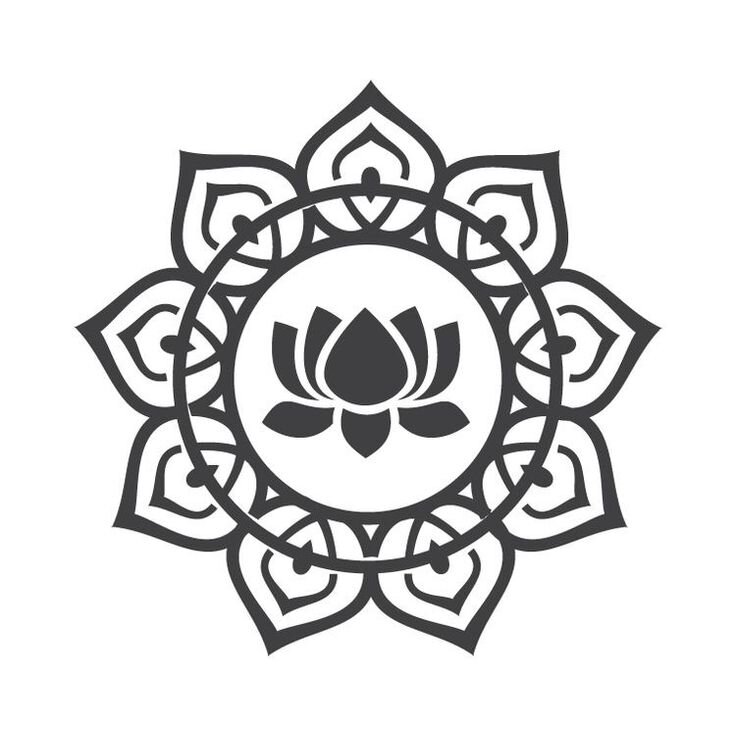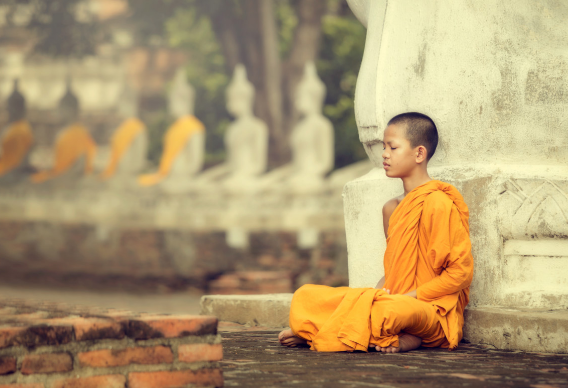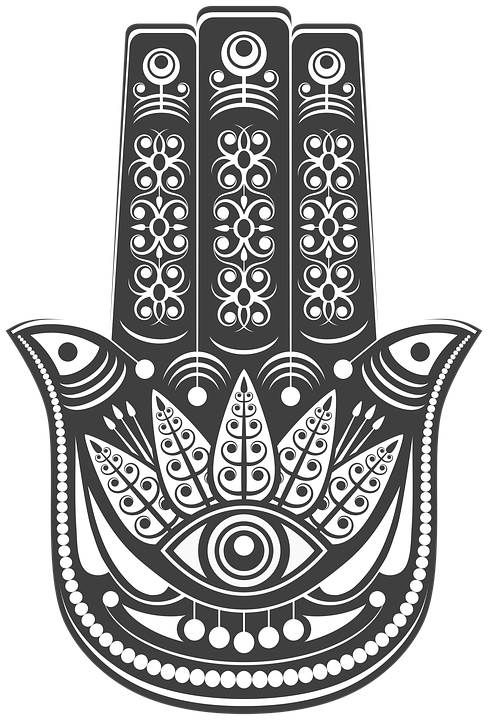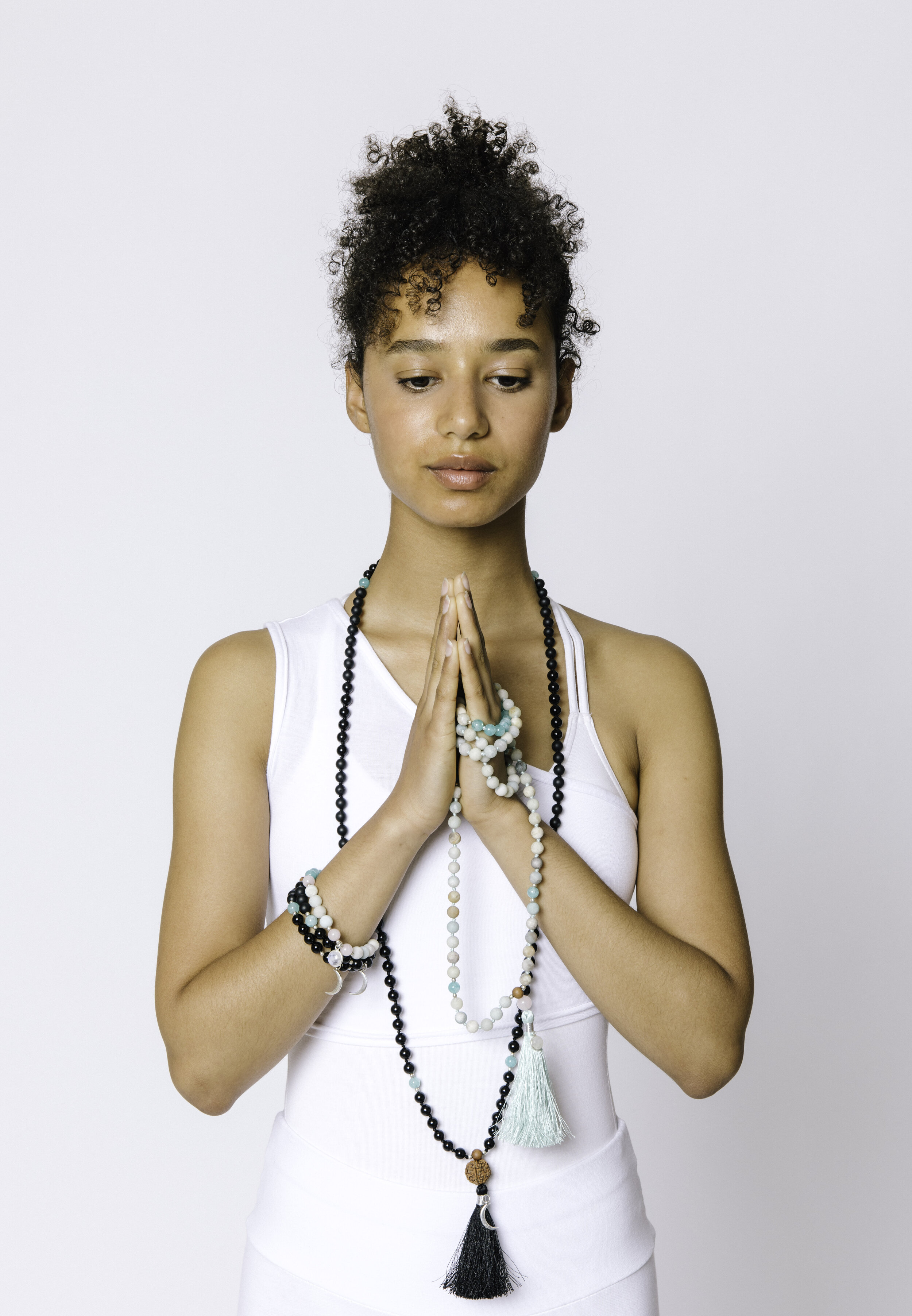Here’s 11 of the most empowering yoga symbols to take your practice to the next level! Plus you’ll learn their meanings – and what they represent. Including yoga symbols for balance & mediation.
If you want to discover the world’s most empowering yoga symbol, keep reading… but before that, you can shop our yoga mats to elevate your practice.

WHAT ARE YOGA SYMBOLS?
Like other symbols, a yoga symbol is a visual representation. Behind them, they hold meaning and purpose.
Yoga symbols and meanings in particular help bring yogis insight and a deeper understanding of the practice of yoga. You might have seen yoga symbols before. They’re often present on clothing or jewelry, as tattoos, in yoga studios, in artwork, or in yoga books. While some might use these symbols as mere forms of self-expression, others may actually use them during, before, and/or after yoga. These symbols are not only often used in conjunction with yoga but also often used alongside meditation.

WHY ARE THE SYMBOLS OF YOGA IMPORTANT?
Although yoga isn’t necessarily a spiritual practice, yoga symbols are capable of helping yogis obtain the highest spiritual energy as possible. In fact, it’s said that different yoga symbols can bring concentration, good energy symbols, happiness symbols, all bring a stronger connection with the universe. As a result, these symbols can boost your consciousness as you enter a deep, meditative state in the healing of your seven Chakras.
To gain their benefit, yogis can utilize different yoga symbols in a variety of ways. For instance, yogis may place a certain yoga symbol in front of them, visualize it, or gesture it with their hands during yoga. While using and learning about the different yoga symbols isn’t required, they have the capability of enhancing your yoga practice. Some people may see little to no significance with yoga symbols. However, their purpose is in the mind of the beholder.

11 SPIRITUAL AND EMPOWERING YOGA SYMBOLS
Each yoga symbol has its own meaning that makes it unique in the world of yoga. Many of these symbols, however, are not only limited to yoga but also to many cultures, religions, and/or spiritual practices.
The following list includes some of the most important and common yoga symbols to ever exist…

1. OM/AUM SYMBOL
The Om or Aum symbol is one of the most sacred and powerful Hindu mantras. It symbolizes the consciousness of the universe or the sound of the universe.This symbol represents the “Om” sound that people often repeatedly make during meditation to gain focus. Likewise, this word is often said before or after yoga asana.
The Om is also sometimes chanted at the end of Sanskrit prayers and before sacred verses and names.

The word “om” or “aum” can be broken down into three separate meanings:
-
A (aahh): The waking state. Represents the universe’s creation and our blissfulness with existing
-
U (oohh): The dreaming state. Represents our spiritual existence beyond our physical bodies
-
M (mmm): The deep sleeping state. Represents the spiritual forces of the universe and the connectivity it provides
Because chanting “om” during meditation or yoga provides calamity and focus, the om symbol in written format tends to refer to the same.
In general, “om” or “aum,” whether written or verbal, symbolizes pure consciousness and bliss.
Many yogis believe that by humming “om,” opening their third eye will be easier, and they can gain a stronger connection to the universe.

2. MANDALA SYMBOL
The colourful, intricate patterns provided by the mandala symbol signify harmony, wholeness, and balance and are seen a lot through yoga.
The outer circles of the mandala, in particular, symbolise the entire universe. Meanwhile, the squares inside of the symbol resemble different realities on Earth. Each layer symbolises another level of existence. The mandala is an ideal symbol for you if you need a reminder that all of us are integrated.In other words, the mandala symbol reminds us that all of us are one whole being. And, like us and our universe, the mandala is very detailed, complex, but nonetheless beautiful.
To use the mandala symbol during yoga or meditation, simply hang a mandala symbol in front of you while concentrating on it, or you could visualise your mandala symbol and the layers during meditation.

3. LOTUS FLOWER SYMBOL
As a symbol, the lotus flower generally represents the wakefulness and enlightenment of the human mind.In Hinduism and Buddhism, lotus flowers generally resemble purity. However, different colored lotus flower symbols can mean different, more specific things.Pink lotus flowers and purple lotus flowers are most commonly featured as yoga symbols.Pink lotuses represent purity, love, and loyalty. Meanwhile, purple lotuses represent awareness and unification of the universe (Brahman).
Some other lotus colors and representations, while not as common, are as follows:
Red lotus = Romance, domination, power
Yellow or gold lotus = becoming enlightened
Blue lotus = mindfulness, soul
White lotus = pure thoughts, of spirit
Likewise, a closed lotus represents the time before enlightenment while an open lotus flower resembles having gained enlightenment.

This is a great yoga symbol meaning for you if want to build extra love and loyalty for yourself and the universe around you.
Due to the admiration and devotion provided by this symbol, it’ll be easier for you to overcome the trials, problems, and disappointments you face.

4. HAMSA / EVIL EYE SYMBOL
The Hamsa (“five fingers”/Hand of Fatima) is a universal symbol that’s present around the world. However, in yoga, the Hamsa symbol resembles the harmony of the Chakras and the five senses. It is the hand symbol of yoga. In fact, each finger on the Hamsa hand correlates with its own chakra and element:
-
Thumb: Solar plexus chakra; fire element
-
Index finger: Heart chakra; air element
-
Middle finger: Throat chakra; Ethereal (space) elements
-
Ring finger: Root chakra; Earth element
-
Pinky finger: Sacral chakra; water element
Sometimes the Hamsa Hand is referred to as the evil eye as it’s said that it can ward off negative energy.
The Hamsa symbol is particularly common on jewelry and tapestries to bring protection.


5. BUDDHA
One of the most common representations in yoga is the symbol of Buddha.
The original Buddha (563 to 493 BC), Siddhattha Gotama, was the founder of, teacher of, and a major symbol in Buddhism. In modern times, Buddha represents someone who has obtained Bodhi, which refers to enlightenment or wakefulness. One who has achieved Bodhi will exhibit great intellect and moral.
For instance, a Buddha will be honest, generous, non-judgmental, patient, and non-violent. As a result of gaining Bodhi, a Buddha becomes a spiritual guide for those below him.
The image of Buddha is important as it acts as a reminder of the three tenants in Buddhism:
Don’t be ignorant.
Refrain from hating others.
Never get angry.
The symbol of Buddha reminds us to practice everything in moderation.
The Buddha symbol additionally reminds us that just like the original Buddha, we too can free ourselves from suffering to lead a better life. Thus, before engaging in a session of yoga, it’s a good idea to try to imagine yourself as Buddha or to visualize him in your head.

6. CHAKRAS SYMBOL
Chakras refer to the energetic body known as the aura.The Chakras are present in each of our bodies. In total, there are seven main Chakras, which are as follows:
Base or Root Chakra (Muladhara)
Sacral Chakra (Swadhisthana)
Solar Plexus Chakra (Manipura)
Heart Chakra (Anahata)
Throat Chakra (Vishuddha)
Third Eye Chakra (Ajna)
Crown Chakra (Sahasrara)
Each Chakra has its own significance and aids with different mental, emotional, physical, and spiritual parts of us. To achieve peace, one must balance each seven of their chakras, which can be done in many ways, such as through the act of yoga or meditation. The latter Chakras are present down the spinal column from the end of the spine to the top of the skull.
Most people aren’t able to physically see the Chakras. For that reason, the Chakras in the body are often depicted in graphics and artwork.Graphics and artwork showcasing the seven Chakras are significant in that they resemble gaining harmony and healing via unblocking each Chakra.
Although not all yogis have the goal to balance their Chakras, others make this a primary part of their practice.

7. HAMSA HAND MEANING
While, again, yoga isn’t necessarily a spiritual practice it itself, many yoga symbols are in fact apart of different cultures and spiritual practices. The Hamsa (Hamesh, Khamsa, or Chamsa) Hand is one symbol that both yoga and many spiritual/religious practices share.

In Buddhism and Hinduism, the Hamsa Hand represents the Hand of God.
The Hamsa Hand also is referred to as the Hand of Miriam (in Judaism) or the Hand of Fatima (in Islam).
The eye in the center of the palm of the Hamsa Hand itself is a reminder to be on the lookout for evil.
The Hamsa Hand is important as it helps protect against evil and jealousy, that is, when it’s facing upright (Abhaya Mudra).
However, when the fingertips face downwards (Varada Mudra), it resembles goodness, answers to prayers and wishes, and fertility.

8. LOTUS FLOWER
Often, many think that the lotus flower represents temptation.
After reading the Odyssey by Homer, one might recall that those who were tempted to eat the lotus would experience forgetfulness. Thus, many might presume that the lotus flower is evil.
In yoga, however, the lotus flower has a powerful and positive representation. The lotus flower itself starts off as a tiny, simple bud. Eventually, it grows, opens up, and reveals its truth.
We too can be like a lotus flower. Like a lotus flower, we can open up our hearts, grow and flourish, and become enlightened, even in the grimmest and darkest of environments.
That said, the lotus flower can resemble us and our true heart, soul, and mind as we navigate our spirituality and grow from it.
After all, just like the lotus flower, we don’t start out where we end up. It takes time, growth, and enlightenment to become who we’re meant to be.


9. MANDALA
If you’ve ever shopped around for adult coloring books, chances are, you’ve seen a mandala.
Mandalas are very popular in coloring books as they feature a plethora of beautiful, small, and complicated shapes. Many are enticed by the beauty of mandalas. However, little do some people know, mandalas are quite symbolic.
“Mandala” translates to “circle” in Sanskrit, which in turn, resembles the universe. The mandala also signifies the harmony and unification between your body, mind, and soul.
The colors a mandala features also has significance on its own:
Red: Power, strength
Orange: Intuition, change, creativity, awareness of the self
Yellow: Joy, laughter, wisdom
Green: Nature, physical balance
Blue: Meditation, peace, emotional balance
Purple: Spirituality
Pink: Romance, femininity
Black: Mysteriousness, individuality, deep cognition
In general, the mandala can help enlighten the mind and help us with the process of our healing.

10. OK HAND
The ok hand symbol or chin mudra is a common mudra or gesture in yoga and meditation. Sometimes the ok hand is referred to as the ring gesture. This gesture is performed by touching the tip of your index finger to the tip of your thumb while keeping the remainder of your fingers facing up. As a mudra, the ok hand aids with the flow of energy within the body. In turn, this assists with one’s healing journey.
When performing the chin mudra, the thumb represents supreme consciousness (Brahman). Meanwhile, the index finger symbolizes human consciousness (atman). Together with the two fingers touching, they resemble the unification between human consciousness and the supreme consciousness. In general, the ok hand or “gesture of consciousness” reminds yogis of the main goal of yoga: to seal their soul with the supreme soul.

11. 108
108 is a sacred number in both yoga and religion. In fact, the distance between the Earth and the sun is 108 times greater than the diameter of the Earth. Likewise, the distance between the Earth and the moon is 108 times greater than the diameter of the moon. Additionally, the sun’s diameter is 108 times larger than the Earth’s diameter.
What is the significance of the number 108 in the yogic system? Sadhguru explains the relationship to one's chakras and the cosmic geometry.
What is the significance of the number 108 in the yogic system? Sadhguru explains the relationship to one's chakras and the cosmic geometry.
To top it off, when you times the number of constellations in the galaxy (27) by their number of directions (4), you get the number 108.
After discovering the latter facts, many believe the frequency of the number 108 in our universe isn’t coincidental. This number has many interpretations as this series of digits is so frequently present. Due to the significance of 108, the Buddhist mantra is repeated 108 times.
Also, several Hindu and Buddhist temples feature 108 steps. Additionally, malas, Buddhist beaded necklaces used for prayer, are featured with 108 beads (plus a guru bead). Even in the practice of yoga alone has correlations with 108.
To honor change, many yogis engage in 108 Sun Salutations.

Japa Mala is a great tool for guiding your meditation practice. The traditional hand-knotted beaded necklace or bracelet can be used to count breaths and/or chants, giving the user the space to simply move through repetitions of 108, the sacred number of universal law. Our meditation malas are made from specially selected semi-precious stones and crystals including Jade or Quartz to assist that connection and guide your ritual of meditation.
As you sit for meditation with a straight back, chin tucked sightly and eyes either closed of 1/10 opened, connect to your third eye, start by feeling the energy within your body and ground into the root of the mat. As you feel the flow of breath clearing energy you can start to visualise your chosen symbol of yoga and move your mala beads through your middle and index fingers to subconsciously count through your repetitions.
You can find out more about malas and how to use mala beads here.
Written by John Parrott, Co-founder of Relax Like A Boss
John, alongside his co-founder Julien created Relax Like A Boss to share their passion of helping and inspiring others to beat stress and live a healthier, happier lifestyle. Relax. Smile. Laugh.
A blog for relaxation, mindfulness and meditation.









0 comments